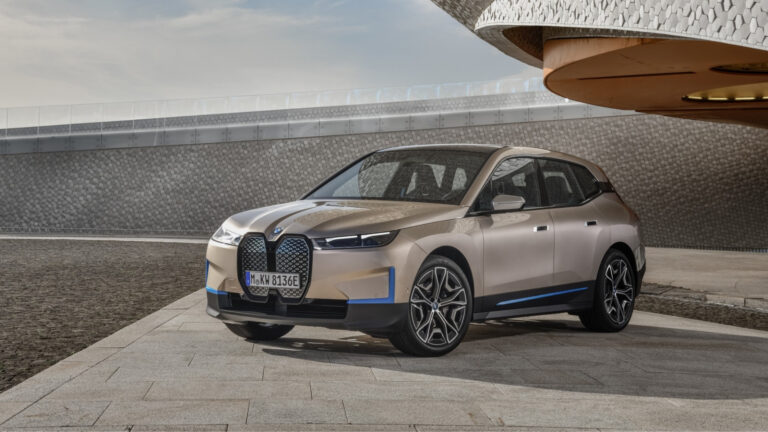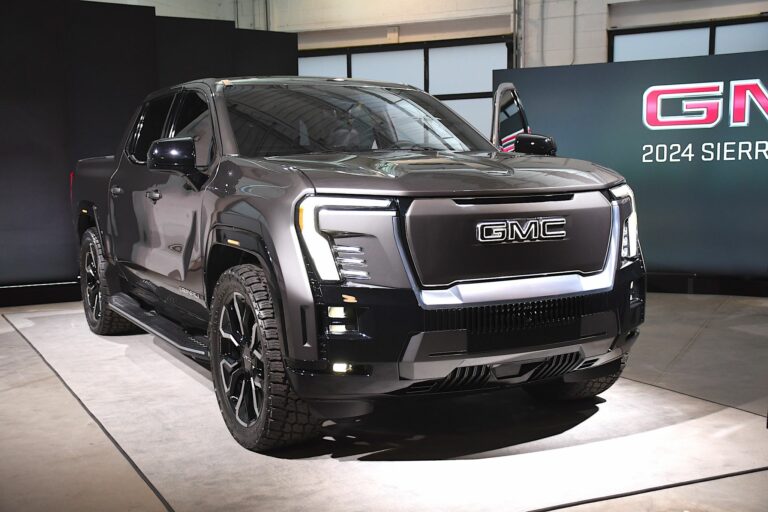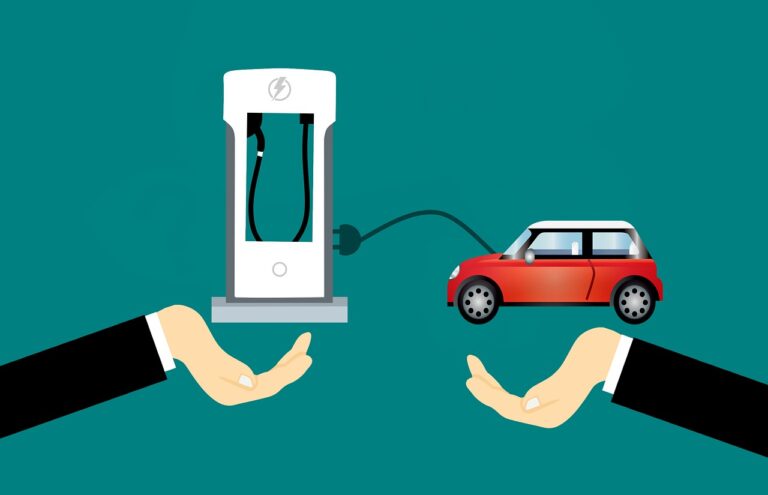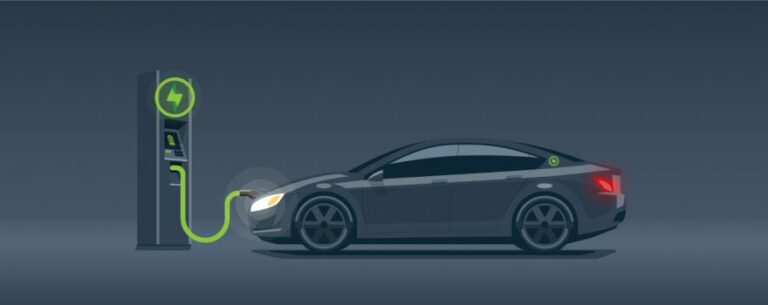
Catégories :
Going electric: 7 things you need to know
2024-01-12 - Updated 2024-04-26

When we change our old gasoline-powered car for a newer model, we immediately notice the improvements and changes, but all in all, the principle is the same. You adjust your seat in the same way, you look in the rear-view mirror as before, you use the brake and accelerator pedals as before. The driving style remains the same, only the comfort, technology and aesthetics are improved.
When you replace your old gasoline-powered car with an electric model, it’s a different story.
Let’s take a look at a few things you need to know to prepare for the transition to electric.
Driving differently

It goes without saying that driving an EV is very different from driving a combustion-powered vehicle. Of course, you’ll use the steering wheel in the same way as you did before, but there are several differences. First of all, some electric cars no longer have an interior rearview mirror. This is replaced by a camera whose image is displayed on your big screen.
This brings us to our next difference, that of display and appearance. Farewell to the small glass dashboards on which speed is indicated by a needle, for example. Your new EV is all about technology, so be warned: your cockpit will be very modern and the screens will be numerous. The technology in your car will be up to date, and this may take some getting used to, especially at first.
Speaking of adapting, you’ll also have to adapt your driving, since EVs use regenerative braking rather than mechanical braking, which means you’ll only need one pedal to drive – the accelerator pedal. You take your foot off the gas pedal and instantly the vehicle slows to a stop if you don’t press it again. These are just a few examples, and we’re sure you’ll notice others, but these are small differences that may surprise you at the start of your transition, but we’re sure you’ll appreciate them!
Consider vehicle autonomy

If you drive a lot in your daily life, you’ll need an EV with a good range. These days, manufacturers make it a point of honour to constantly increase the range of their vehicles. The average range is currently between 300 and 400km, but we’re already aiming for 500km and, in the longer term, 1000km per charge. Whether you need to drive a hundred kilometers a day or just make short trips around town, it’s important to keep your car’s range in mind so you don’t get caught out at the wrong moment. This will help you plan your journeys with peace of mind.
Charging infrastructure

Whether on the road or at home, recharging your EV is an important part of your driving experience. It’s much more pleasant and less stressful to hit the road knowing our vehicle has enough range, but it’s even more reassuring to know where to stop for a refill if the need arises. We therefore recommend that you familiarize yourself with both residential and commercial recharging infrastructures, so that you’ll always be able to plug in quickly and efficiently.
What’s more, when recharging at a commercial charging station, also known as a fast-charging station, we strongly advise you to aim for 80% charge and not 100%. This is not only because it can have a negative impact on your battery in the long term, but also because it will cost you much more than if you stop charging at around 80%.
Above 80%, recharging costs increase. So on a very long journey, it makes more sense and is more economical for you to stop more frequently and stretch your legs at the same time!
Effects on the battery

The battery in an EV lasts a long, long time. We’re talking about a lifespan of around twenty years, but batteries are generally guaranteed for a period of 8 years. To preserve your battery, we obviously recommend that you don’t always charge your car at a fast-charging station. It’s better to invest in a home charging station, so you can charge your car in the comfort of your own home, at the right energy rate.
Of course, fast charging stations charge your EV more quickly, delivering a much faster flow than Level 2 stations, but this can also have a negative impact on your battery in the long term.
Another element that can have an impact on your battery and your EV’s range is your journey. The impact is on a smaller scale, of course, but when you’re not accelerating or going downhill, it helps recharge your battery!
Tax incentives

The Quebec and Canadian governments, as well as several municipalities, currently offer attractive tax incentives. On the provincial side, the Roulez Vert program offers a rebate of up to $7,000 on a new EV, and up to $3,500 on a used EV. At the federal level, a $5,000 incentive is offered on the purchase or lease of a battery, hybrid or hydrogen fuel cell electric vehicle.
As for municipalities, many offer rebates for the purchase and installation of a charging station. We invite you to learn more about all these incentives on our dedicated page.
And the incentives don’t stop there. Many cities, such as Joliette, St-Jérôme and Victoriaville, offer free parking to EV owners. What’s more. Some provincial ferries offer free travel to electromobilists, and in some regions, electric car drivers have access to reserved lanes. This is particularly the case in the greater Montreal area, and let’s face it, it’s very practical!
Quiet ride

We’ve already established that driving an EV is different from driving a gasoline-powered vehicle, but we haven’t talked about THE major difference: silence. The operation of an electric vehicle is totally silent, which means that you don’t hear the acceleration of the engine when you accelerate, or make any noise when you start off or reverse. You’re in complete silence, apart from any outside noise. You need to adapt to this silence, especially when you’re in a parking lot or backing out of your yard, for example, since it’s important to make sure that pedestrians, cyclists, etc., have noticed you, given the absence of noise produced by your vehicle. So you need to be even more vigilant.
Savings
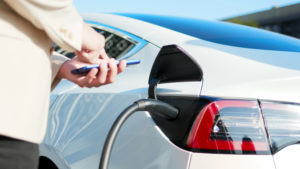
Your transition to electric will be a great saving. Yes, it’s true that EVs are a little more expensive to buy, but with all the incentives on offer, the prices are more than attractive. And don’t forget that you’ll save a lot of money at the gas pump, because you won’t be going there anymore! On average, a mid-sized internal combustion vehicle can cost between $3,500 and $4,000 a year in gasoline. An electric car will cost you around $400 in electricity.
There are major savings here, as well as in maintenance and upkeep costs. Since there are far fewer parts on an EV, there are fewer visits to your mechanic, and your wallet will thank you for it. No oil changes, no transmissions to replace, the costs are lower and you’ll quickly realize it!
Now that you know a little more about the transition to electric, your first ride in your new EV will be a breeze! Give yourself a few days to get used to it, and you’ll see, you won’t be able to live without it. The transition to electric is simple, you just have to take the plunge, and if you need a charging station, you know who to contact!
Safe travels, dear electromobilists.

